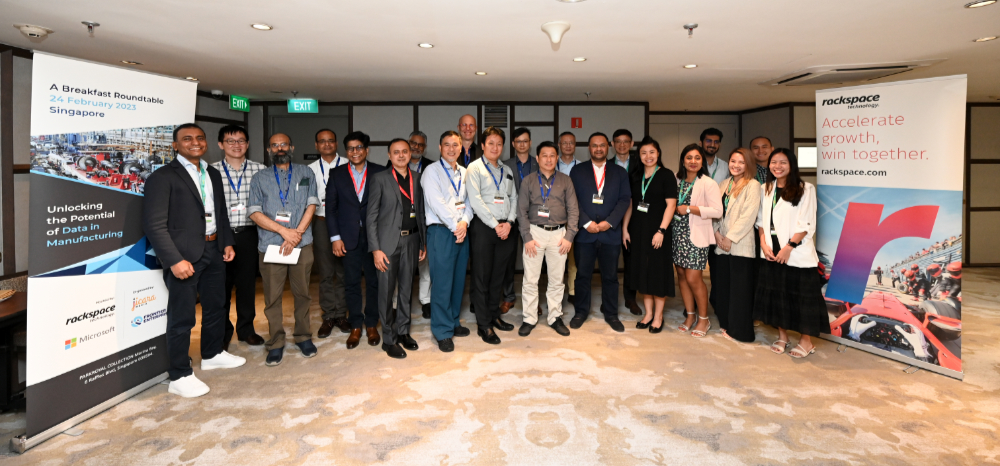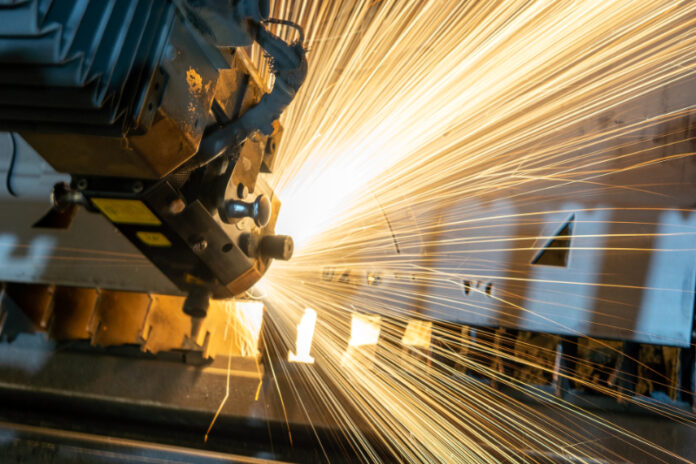Within the manufacturing industry, abundant ideas exist for harnessing data to enhance productivity. The real hurdle, however, lies in transforming these ideas into action, given the constraints of cost and implementation strategies.
So, how can enterprises overcome these obstacles and seize the opportunities presented by emerging technology?
To create a blueprint for success for the manufacturing industry, experts gathered for a roundtable titled “Unlocking the Potential of Data in Manufacturing,” organised by Jicara Media, and hosted by Rackspace Technology and Microsoft.
Among manufacturers, the concept of a digital thread — which connects data from R&D, down to product development, and into production — often serves as the starting point for any conversation surrounding data democratisation, observed Shwetank Sheel, Director, Public Cloud Data Global Pre-Sales & Solutions, Rackspace Technology.
According to Sheel, a successful data platform for manufacturing needs to have a “digital thread” that connects all the different processes and systems involved. At the same time, it’s important to identify specific use cases that can drive business value through the platform. These two activities should happen simultaneously, since trying to scale up from proof-of-concept projects becomes difficult without a clear understanding of how the platform will be used to create value.
Enterprise challenges
For cereal maker Kellogg Asia Pacific, one of the most persistent challenges is data harmonisation.
“I have come across data in various formats and structures in the companies I have worked for,” said Saurabh Lal, Senior Director of Supply Chain Network & Digital at the company. “We’ve got Excel spreadsheets, different ERPs, and we’re operating across multiple countries. Getting everything into a usable format is our biggest challenge.”
In addition to this, Kellogg is also looking into smart manufacturing.
“We’ve got some legacy plants that have old technology and less automation. How do we convert such plants into smart factories? That’s the second challenge. And when I say, ‘smart factory,’ it’s not just about standard operating conditions. It’s also about enhancing quality assurance, implementing smart maintenance practices, and other similar measures,” he continued.
For a major drug manufacturer, consumer safety stands as the primary consideration, as they aim to streamline their operations.
A director at the drug manufacturer’s IT division shared that the challenge lies in connecting data across various areas of the manufacturing process, including equipment and IT infrastructure, in a way that can drive improvements. However, it’s also important to ensure that the data meets the regulatory requirements of different markets, since the end goal is to bring the product to market. This can be particularly complex when it comes to AI, which may have different expectations and regulations depending on the market.
“Once we expect people to make decisions, they are essentially taking responsibility for ensuring that our product is safe. The question is whether we are comfortable delegating that responsibility to an AI,” the director added.
According to Saj Kumar, Regional Business Leader – Manufacturing, Microsoft Asia, data in the manufacturing industry can be broadly categorised into two main buckets: business data and plant/operational technology (OT) data.
Whereas business data is more structured and well-defined, OT data is much more complicated, Kumar said.
“A lot of the OT data in manufacturing consists of time-series data, which involves capturing signals from machines over time for reporting and analytics. However, this type of data alone does not provide complete end-to-end visibility, especially when trying to connect customer or production orders with specific machines, batches, or materials. This requires combining different types of data, which can be challenging,” he elaborated.
Data roadmap
When it comes to data centralisation, conflicts often arise within an organisation due to the varied ways in which different departments utilise data.
Ajith Narayanan, CTO of robotics systems maker Zoid Labs, believes that while data centralisation is a must, organisations should apply a level of flexibility to allow different people to consume different applications.
“The challenge lies in the data architecture. How we represent the data and the inter-linkages between different pieces of data is crucial. In our product development, we used data to refine the product in the R&D stage. To simplify this process, we decided to use only YAML and JSON formats early on. If we can get the mindshare within an organisation to think about data differently, maybe a couple of formats like JSON and YAML would satisfy everybody,” he said.

For Kellogg’s Saurabh Lal, decision makers need to be convinced that a particular solution will not only benefit one function but, at the very least, an entire business unit.
“When you say it can help you improve your sales, or it will help improve the outputs, then those teams need to come on board and sign off on that particular solution,” he said.
Rackspace Technology’s Shwetank Sheel also acknowledged the huge role of cloud in turning business ideas into fruition, a feat which has been proven through many of their customers’ success stories.
“Cloud allows you to experiment on a small scale and validate your ideas. For example, you want to build a business case that shows a potential revenue increase of SG$10 million. By investing in a small amount of money, you can see whether your efforts are moving the needle and determine whether this is the right approach or not,” Sheel said.
Diving into AI
AI continues to unlock new possibilities every day, revealing a multitude of use cases. While AI has traditionally found applications in areas like CX (Customer Experience), the advent of popular solutions like ChatGPT is revolutionising entire industries, introducing innovative solutions, and creating new avenues for generating revenue.
Manufacturers, at the very least, are aware of what AI can contribute to their business, and it won’t be long now before mainstream use of the technology happens within the industry.
Ajith Narayanan of Zoid Labs, for instance, foresees that predictive maintenance powered by AI will play a crucial role in reducing downtime and potentially even preventing factory accidents.
“We’re not at the stage where AI models are ready yet, but we have a scenario where the data generated by the corrosion measurement system IoT is sent over MQTT to a server. We will use this data with some models to analyse and predict when we should perform maintenance on the machines,” he said.
For generative AI, Microsoft’s Saj Kumar thinks some functionality is already present for manufacturers to experiment with, yet the technology’s full potential has yet to be realised.
“As of now, we are seeing it more being used for unstructured data, whether it’s documentation or SOPs — these are all very classic structured documents that have been in place in factories for people to refer to. But if a particular situation arises in the factory, for example, what should be done? AI will be able to pull up all those documents and provide an answer, which it can do today. So, I think that’s where we will see the first revolution in terms of asking these questions and getting answers,” he said.
Despite this, AI solutions must go beyond digitising documents or tagged HTML. The goal is for generative AI to be able to provide operators with accurate answers when needed.
Until then, companies like Rackspace Technology and Microsoft are doing their part to further research AI possibilities.
















